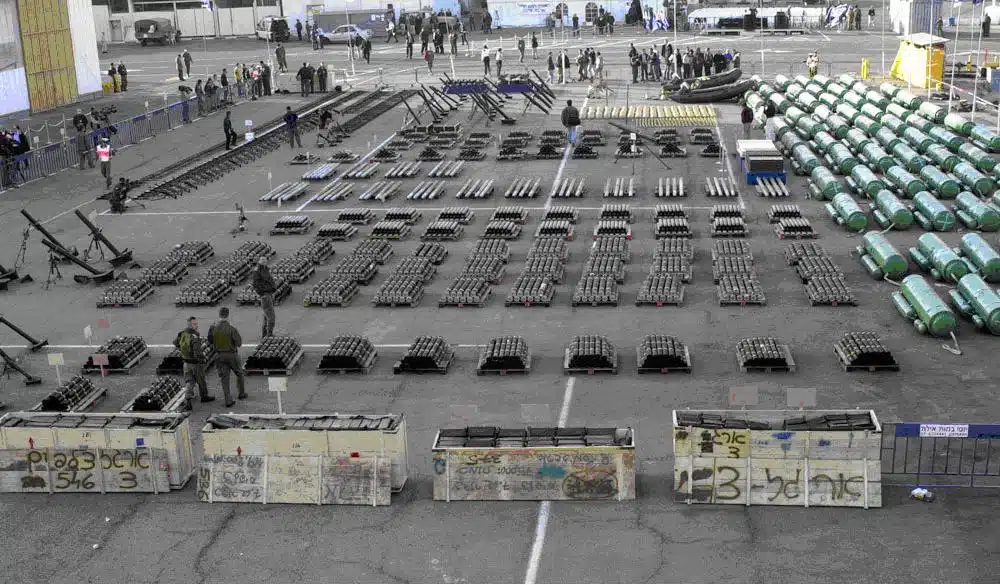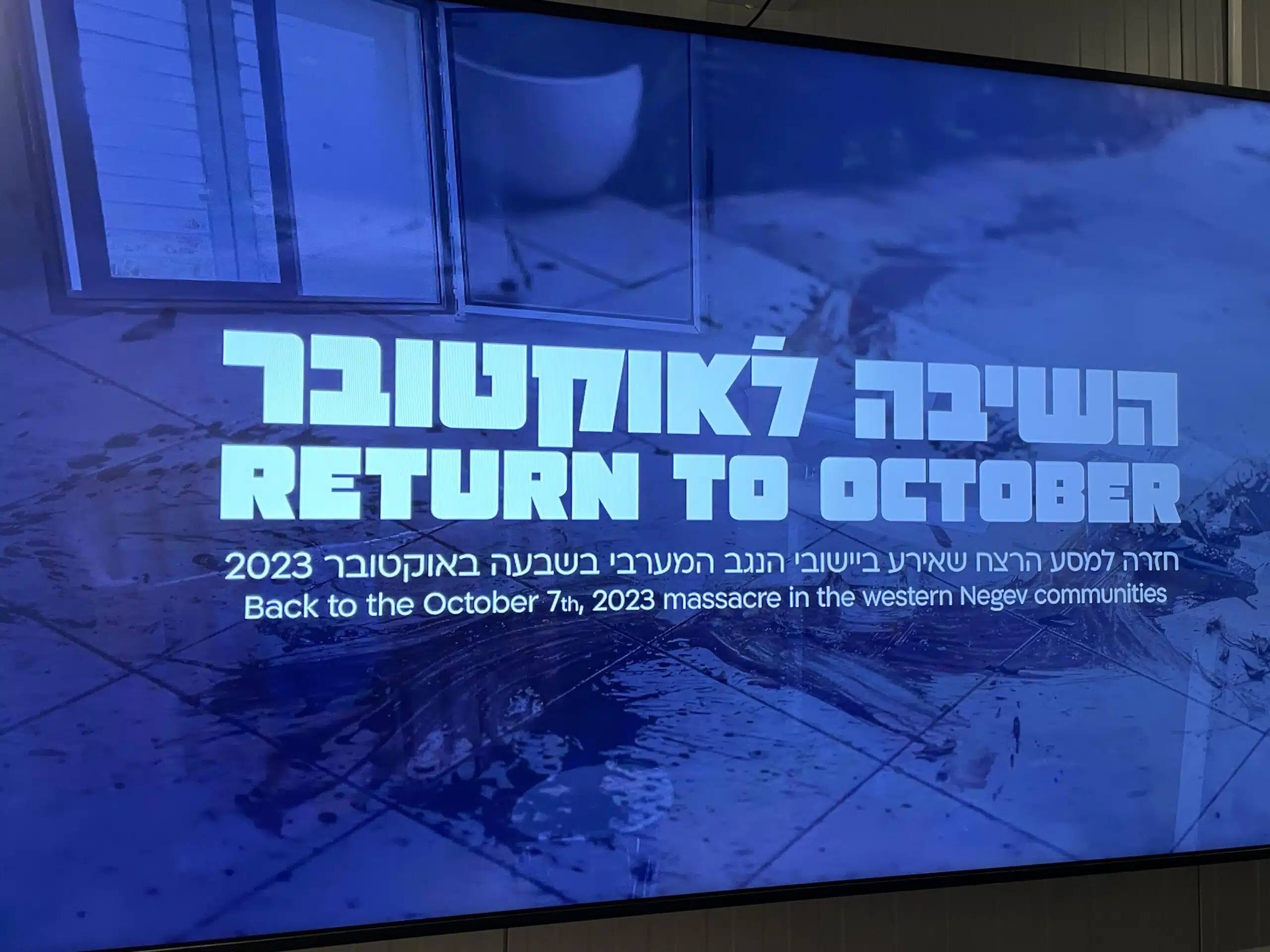|
Getting your Trinity Audio player ready...
|
Swedish activist Greta Thunberg — who has emerged recently as a leading propagator of anti-Israel hate worldwide — announced on Sunday the creation of the “The Global Sumud Flotilla.” Dozens of ships carrying token amounts of humanitarian will set sail at the end of this month and seek to breach Israel’s naval blockade of the Gaza Strip, marking the latest large-scale media stunt aimed at delegitimizing the Jewish state and its right to self-defense amid the the ongoing war with Hamas.
The naval blockade of Gaza, imposed by Israel in January 2009, has been a contentious element of the longstanding conflict between Israel and Hamas, the internationally-recognized terrorist organization that has ruled Gaza for nearly the past two decades.
The Gaza maritime blockade limits sea access to prevent the smuggling of weapons and materials for terrorist use, while permitting the inspection and delivery of humanitarian aid through approved channels. Critics, including some human rights organizations, have labeled it as illegal collective punishment, but a thorough examination of international law and military necessity demonstrates its legitimacy.
Israel’s naval blockade of Gaza is legal under international humanitarian law and the law of armed conflicts at sea, as substantiated by key legal frameworks and inquiries, and is militarily justified as a proportionate response to existential security threats. By drawing on established legal precedents like the San Remo Manual and the United Nations Palmer Report, alongside military rationales, the blockade emerges as a valid defensive measure in an international armed conflict.
Legal Framework for Naval Blockades
International law governing naval blockades during armed conflicts is primarily outlined in the San Remo Manual on International Law Applicable to Armed Conflicts at Sea (1994), a widely-accepted restatement of customary international law developed by experts from the International Institute of Humanitarian Law. The document defines a blockade as a method of warfare that involves preventing vessels from entering or exiting specified ports or coastal areas under enemy control, provided it meets strict conditions to ensure legality and proportionality. Key requirements include:
- Declaration and Notification: The blockade must be formally declared and notified to all belligerents and neutral states, specifying its commencement, duration, location, and extent.
- Effectiveness and Impartiality: It must be effectively enforced by naval forces and applied without discrimination to all vessels, regardless of flag.
- Proportionality and Humanitarian Considerations: The blockade must not cause disproportionate harm to civilians, such as starvation, and provisions must be made for the passage of essential humanitarian aid, subject to inspection. Under Rule 103 of the manual, if the civilian population is inadequately supplied, the blockading party must allow relief consignments, but this does not invalidate the blockade itself if security inspections are permitted.
The rules described above derive from historical instruments, including the 1909 London Declaration, and are applicable in both international and non-international armed conflicts, though the Gaza situation is treated as international due to Hamas’s control of the coastal enclave. The San Remo Manual explicitly allows blockades as acts of war when imposed for legitimate military objectives, such as denying the enemy access to war-sustaining resources. Violations of these conditions could render a blockade unlawful, but compliance upholds its validity.
Additionally, Article 51 of the UN Charter affirms the inherent right of self-defense, which justifies blockades in response to armed attacks, including from non-state actors like Hamas.
The Fourth Geneva Convention prohibits collective punishment (Article 33), but a blockade aimed at military targets, with allowances for civilian needs, does not inherently violate this if it is not intended to punish the population collectively.
Application to Israel’s Naval Blockade of Gaza
Israel’s blockade complies with the San Remo Manual’s criteria, as confirmed by the 2011 UN Secretary-General’s Panel of Inquiry (Palmer Report) on the 2010 Gaza flotilla incident. The panel, chaired by Sir Geoffrey Palmer, explicitly found the naval blockade legal under international law, determining it was imposed as a legitimate security measure to prevent weapons from entering Gaza by sea. Key findings included:
- Legitimate Security Objective: Israel faced a real threat from terrorists groups in Gaza, with more than 5,000 rockets fired into Israeli territory between 2005 and 2009, causing civilian casualties and injuries. The blockade addressed this by controlling maritime access, predating Hamas’s 2007 takeover and focusing on arms smuggling rather than punishment.
- International Armed Conflict Classification: The Panel treated the Israel-Hamas conflict as international for blockade purposes, given Hamas’s de facto authority in Gaza, enabling application of naval warfare rules.
- Declaration and Notification: Declared on January 3, 2009, after prior restrictions proved inadequate, and notified via Notices to Mariners, radio broadcasts, and diplomatic channels, ensuring transparency.
- Proportionality and Effectiveness: The blockade was proportionate, as Gaza lacked major ports for large shipments, with most goods entering via land crossings. The blockade was enforced impartially and effectively by Israeli naval forces, without intent to starve civilians. Israel allowed essential supplies and humanitarian aid through inspections at the Port of Ashdod.
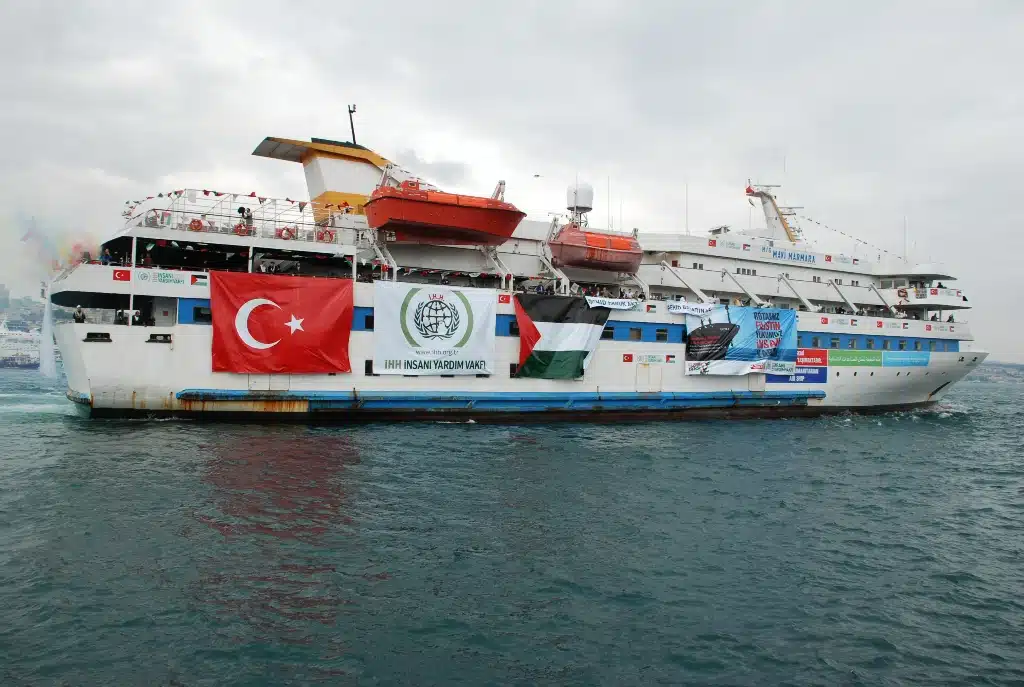
IDF’s Maritime Humanitarian Aid Inspection and Delivery Process for Gaza
The process for humanitarian aid entering Gaza by sea, as managed by the Israeli Defense Forces (IDF) and the Coordinator of Government Activities in the Territories (COGAT), typically involves shipments arriving at Israel’s Port of Ashdod rather than directly docking in Gaza, to ensure thorough security vetting and coordination.
Aid vessels, such as the UAE’s “MIRA” ship carrying more than 2,000 pallets of water, medical equipment, shelter supplies, and hygiene products, dock at Ashdod where the cargo undergoes comprehensive inspections by Israeli officials to confirm it contains only approved humanitarian items and no prohibited materials that could aid terrorist groups. Once cleared, the aid is unloaded, loaded onto trucks often numbering in the hundreds per shipment and transferred into Gaza via land crossings, including Kerem Shalom or Erez West, with IDF forces providing security and COGAT facilitating logistics in collaboration with international partners.
Maritime route supplements land and air deliveries, with no limits imposed on aid volumes, though distribution inside Gaza relies on UN agencies and other organizations to collect and disperse the supplies efficiently.
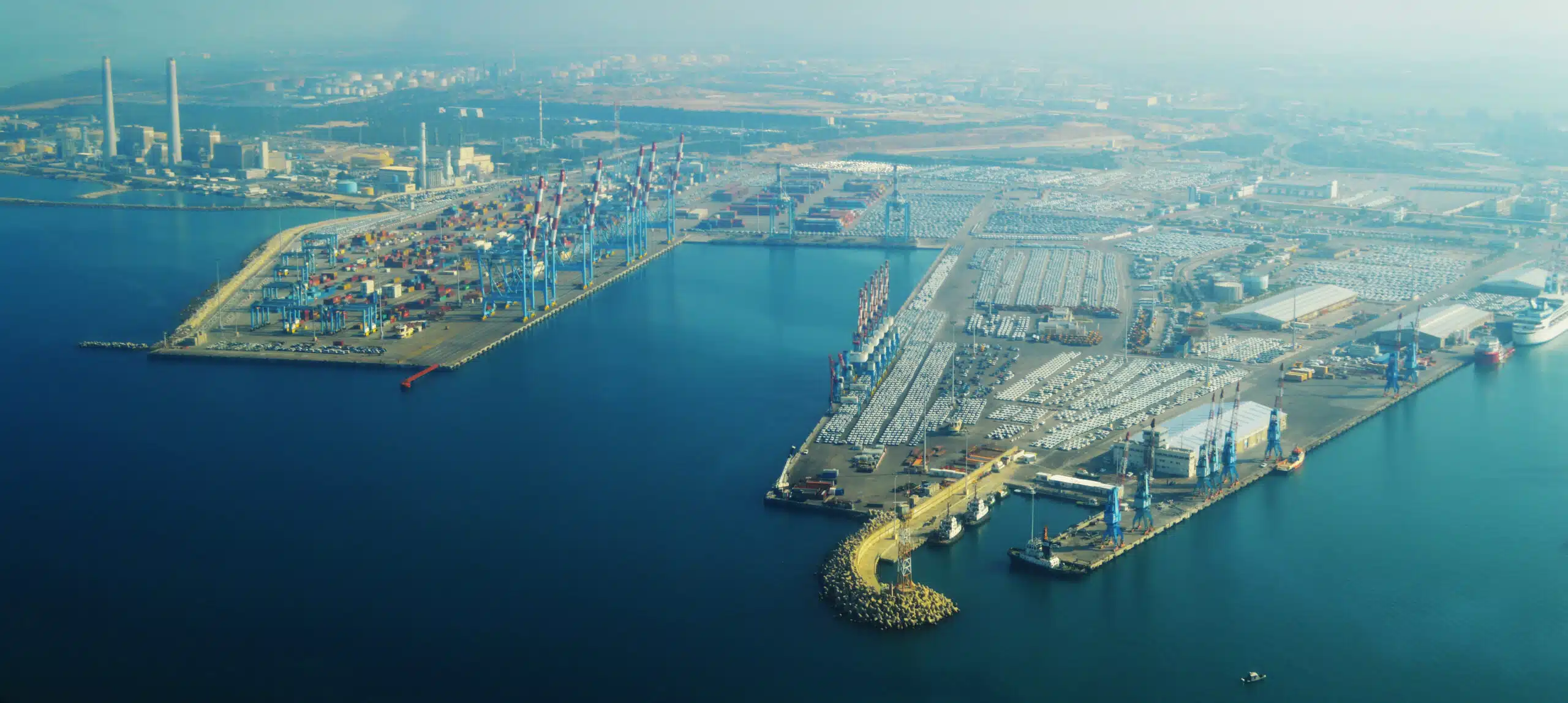
Military Arguments Supporting the Blockade
From a military perspective, the blockade is a necessary and effective tool for Israel’s defense against asymmetric threats from Hamas and other Gaza-based terrorists. The primary objective is to interdict the flow of weapons, terrorists, and funds that sustain attacks on Israeli civilians. Military necessity under international humanitarian law permits such measures when they provide a definite military advantage, as outlined in the San Remo Manual.
- Prevention of Arms Smuggling: Gaza’s coastline offers potential routes for Iran-supplied weapons via sea tunnels or vessels, which the blockade has successfully curtailed. Post-blockade data shows a sharp reduction in rocket attacks, demonstrating its effectiveness in degrading Hamas’s military capabilities.
- Response to Ongoing Threats: Since 2001, terrorists in Gaza have launched thousands of rockets, mortars, and other projectiles, justifying sustained naval restrictions as part of Israel’s right to self-defense. The blockade complements land and air measures, creating a comprehensive security envelope without requiring reoccupation.
- Proportionality in Military Terms: Enforcement is calibrated to minimize civilian harm, with diversions to Ashdod for aid delivery ensuring humanitarian access while inspecting for dual-use items. The balance of military objectives against collateral impacts, as evidenced by Israel’s facilitation of overland aid despite hostilities.
All these arguments underscore that the blockade is not punitive but a targeted military operation, essential for protecting Israeli sovereignty and civilians from an enemy that uses Gaza as a launchpad for aggression.
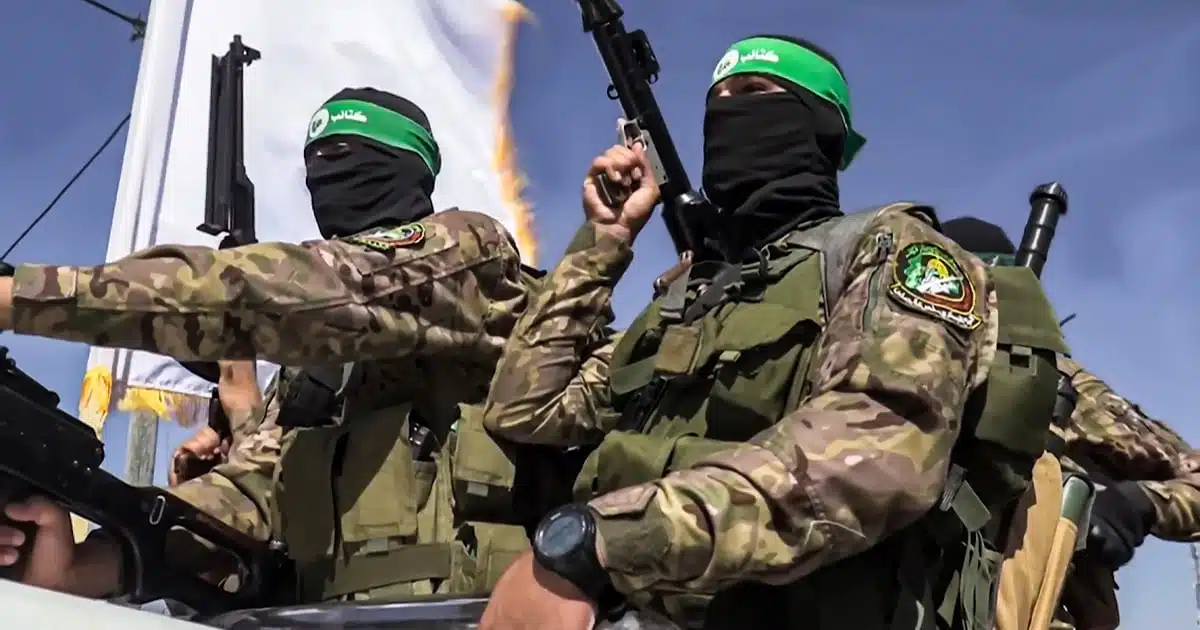
Known Instances of Sea Smuggling Attempts by Hamas to Gaza
Below is a chronological compilation of major documented incidents based on credible reports, military intercepts, and analyses. The smuggling recorded primarily involve attempts to smuggle weapons, explosives, or dual-use materials via maritime routes (ships, boats, or vessels) destined for Gaza. Note that many attempts are linked to Iranian support, and some predate Hamas’s 2007 takeover of Gaza.
| Date | Incident Details | Ship / Vessel Name | Origin / Destination | Cargo |
| May 7, 2001 | The Israeli Navy intercepted a vessel attempting to smuggle weapons to Palestinian groups in Gaza, backed by Hezbollah and PFLP-GC. The ship was acquired off Syria. | Santorini | Lebanon / Gaza Strip | 40 tons of weapons, including Strela anti-aircraft missiles, mortars, rifles, grenades, mines, RPG-7 launchers, and artillery rockets. |
| January 3, 2002 | A ship purchased in Lebanon and loaded in Sudan/Yemen was intercepted in the Red Sea, carrying weapons for the Palestinian Authority, with links to terrorists associated with Hamas. | Karine A | Lebanon / Sudan / Yemen / Gaza Strip | 50 tons of weapons in 80 submersible containers, including RPG rockets, anti-tank mines, explosives, Sagger missiles, rifles, grenades, and ammunition. Disguised with civilian goods like rice and toys. |
| May 21, 2003 | A fishing boat was intercepted west of Haifa, carrying explosives-related items for Gaza terrorists, connected to Hezbollah and Palestinian Authority. | Abu Hasan | Lebanon / Egypt en route to Gaza | Radio-activation systems for bombs, CDs with suicide attack directives, rocket fuses, and Katyusha detonators. |
| March 15, 2011 | The Israeli Navy discovered a cargo ship with Iranian-manufactured weapons concealed behind civilian goods, destined for Hamas in Gaza. | Victoria | Not specified / Gaza | Over 50 tons of weapons, including 60mm/120mm mortars, C-704 anti-ship missiles, and ammunition for assault rifles. Instruction manuals in Farsi. |
| March 5, 2014 | An Iranian cargo ship was intercepted in the Red Sea, carrying advanced missiles hidden under cement bags, intended for smuggling into Gaza via Sudan and Sinai for Hamas. | Klos C | Iran / Gaza via Sudan | 40 M-302 rockets, 181 mortar shells, and about 400,000 bullets. |
| November 22, 2016 | A disguised Palestinian fishing boat was intercepted off Gaza’s coast after departing south and returning laden, carrying smuggling materials for Hamas weapons production. | Unnamed fishing vessel | Southern Gaza / Sinai return to Gaza | Raw materials for weapons and tunnels (specifics not detailed, but caused secondary explosions). |
| November 2019 (exact date not specified) | The Israeli Navy struck a Hamas naval base amid reports of sea smuggling attempts, though specifics on a vessel are limited; linked to ongoing efforts to import via sea from Sinai. | N/A (base targeted) | Sinai / Gaza | Potential weapons or materials via low-profile vessels or frogmen. |
| February 4, 2020 (incident occurred ~November 2019) | The Israeli Navy thwarted a sea vessel attempting to smuggle weapons from Sinai into Gaza for Hamas. | Unnamed vessel | Sinai / Gaza | Weapons (details classified, but confirmed as arms smuggling). |

